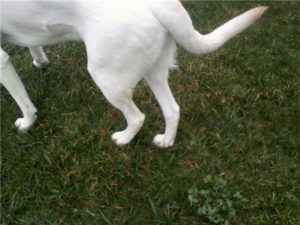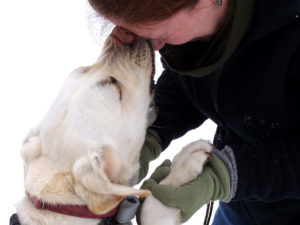Canine hip dysplasia is a genetic issue that usually affects large-breed dogs. Small dogs can still be affected, though they tend to be asymptomatic. In hip dysplasia, the dog’s hip joint becomes loose and unstable, and osteoarthritis develops. The first signs generally appear when dogs are puppies, from the age of 4 to 12 months. Fortunately, not all puppies in a litter will develop hip dysplasia, although if your dog does have it, she should not be bred.
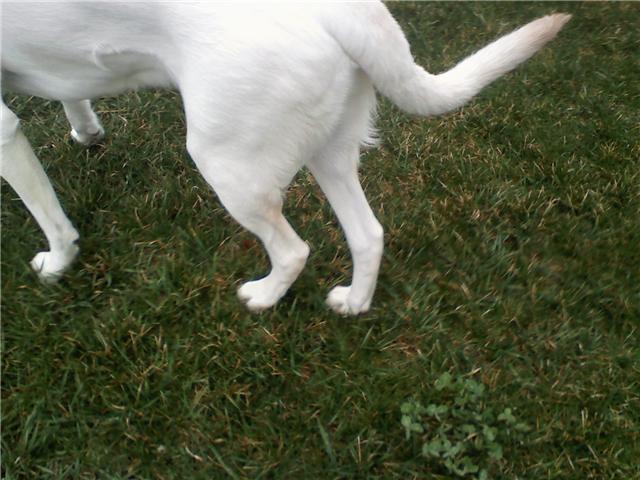
Hip dysplasia involves the abnormal development of a dog’s ball and socket hip joint. In a healthy ball and socket joint, the head of the large bone (the femur) in the dog’s leg fits snugly into the hip socket. In a dog with hip dysplasia, this is not the case. The socket itself is not properly developed. It is shallow, and this poor fit creates stress on the joint. The natural weight of a larger breed dog exacerbates this, which is why those breeds tend to be more prone to developing symptoms. Dogs that are overweight can also exacerbate this condition.
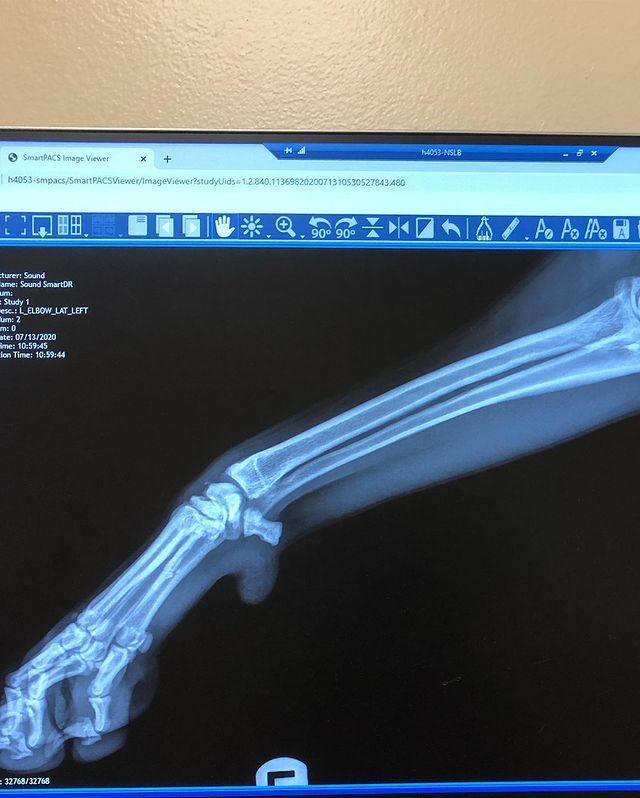
In dogs with hip dysplasia, bone growth generally overtakes the development of the muscles. Thus the joint has to bear more weight than it usually would have. And this weight is greater than the natural strength of the tendons, muscles, and ligaments around the joint. That is how joint instability occurs. And in an unstable joint, osteoarthritis develops – the cartilage thins due to excessive wear and tear, there is a build-up of fluid in the joint, and bony growths form around the joint. The membrane of the joint then becomes inflamed, and there is a loss of range of motion of the joint, as well as pain.
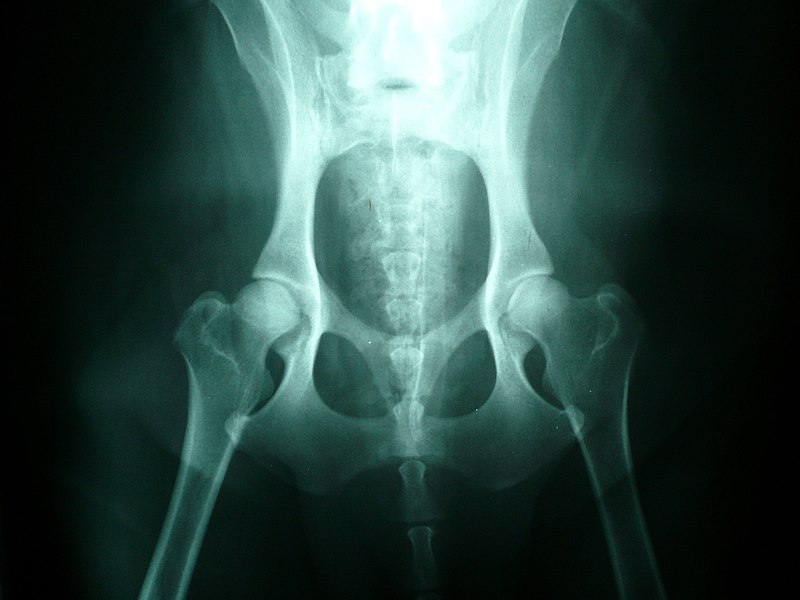
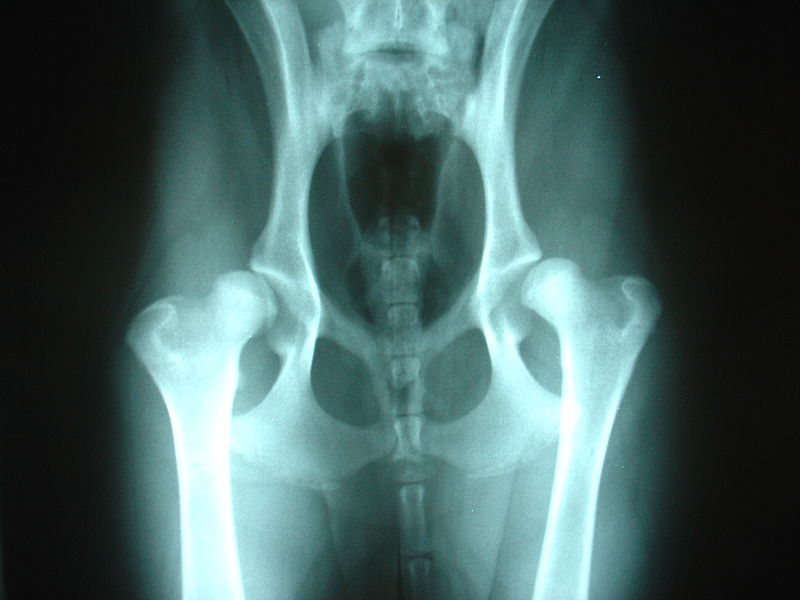
Symptoms Of Canine Hip Dysplasia
The hips of dogs with this condition seem normal at birth, but they change gradually as the puppies age. Symptoms include:
- pain in the hip
- walking with a limp or a swaying motion
- doing bunny hops when running
- difficulty in the back legs when getting up
- the pelvis drops when you press on the rump
- trying to extend the back legs towards the front when the puppy is on his back causes pain
Progression Of The Disease
Canine hip dysplasia is diagnosed with an x-ray. Dogs are generally sedated or anesthetized so that good x-rays are able to be taken without the dog being in pain. Whether a dog has mild, moderate, or severe hip dysplasia is determined based on the findings of the x-rays.
Mild Hip Dysplasia – There are no signs of degenerative arthritis yet. There is increased space in the joint, and the ball of the hip is partially out of the socket.
Moderate Hip Dysplasia – There is the beginning of arthritic changes to the joint, at which point the condition becomes irreversible. For example, a flattening and wearing of the top part of the hip bone, which is normally rounded. The surfaces of the joint are rough. Bone spurs begin to develop. The joint itself hardly sits in the socket joint, which is very shallow.
Severe Hip Dysplasia – Arthritic changes are definitely present by this stage. The hip bone is completely out of the joint.
Not all dogs who have hip dysplasia go lame, even if they develop arthritis. However, some dogs develop lameness when they are puppies. Careful management of the diet and eliminating situations that make the condition worse are important to maintaining the quality of life of a dog diagnosed with hip dysplasia. This includes:
- exercising your dog on a leash
- not letting them jump, run or play when they are showing signs of pain
- feeding your dog good quality food in a quantity appropriate for his age
- making sure he does not gain weight, or if he’s overweight, that he loses it
Certain things, like taking your dog swimming, support the health of those afflicted with canine hip dysplasia. Swimming doesn’t stress the joints and improves muscle mass and joint flexibility. Dogs often love it too.
Canine Hip Dysplasia Treatment
Depending on the severity of the disease in your dog, veterinary treatment will be either medical or surgical or both. Surgery is recommended for some puppies when it is believed this will prevent degeneration of the joints. In older dogs who experience lameness and pain, despite other medical treatments, hip surgery is also recommended.
Surgery
There are five different types of surgery for canine hip dysplasia. Preventative surgery in puppies is designed to move the head of the femur more deeply into the hip socket. The surgeries are triple pelvic osteotomy and femoral osteotomy. Only puppies who don’t have any degeneration in their joints are eligible for this surgery.
Other types of surgery performed on older dogs are:
- Pectineus myectomy – removal of the pectineus muscle that does not slow down the progression of joint disease, but does provide relief from pain for a while
- Femoral head and neck excision arthroplasty – This also relieves hip pain. It involves the removal of the head of the femur. Generally, only dogs under 36 pounds can have this type of surgery.
- Total hip replacement – An artificial joint replaces the diseased joint. It can be done on both hips if both are affected and is generally very successful. Only dogs with disabling degenerative joint disease will have this treatment, and they must be at least nine months old.
Non-Surgical Management
This includes:
- weight loss where appropriate
- not exercising on hard surfaces
- physical therapy
- anti-inflammatory medication
- joint fluid modifiers such as adequate, an intramuscular injection that helps prevent the cartilage in the joint from wearing away and relieves pain and inflammation
- restriction of activity
- warm compresses on the affected joints
- painkillers such as NSAIDs
- make sure floors aren’t slippery
- when it’s damp and chilly, keep your dog inside
- give your dog an orthopedic bed
Preventing Canine Hip Dysplasia
For puppies with a genetic predisposition to canine hip dysplasia, steps can be undertaken to prevent the development of symptoms or failing that, to help ensure a less severe expression of the disease.
Don’t feed your puppy too much – Your puppy needs the right nutrition for his age and development stage, but some dogs really love their food and will eat even when not hungry. You need to make sure your dog only has access to what he should be eating, and the correct amounts.
Care with exercise – Don’t let your puppy jump up or down from heights, or stand on his back legs, such as they do when they’re standing against a fence or window.
Alternative Treatments
Alternative treatments don’t have a lot of medical weight behind them as yet, though there is often considerable anecdotal evidence. For some people, surgery or vet treatments are not an option because they cannot afford them. For others, anything that might improve the quality of life of their beloved pet is worth a try.
And many vets these days use dietary supplements in their practice. You often read about omega-3 fatty acids being prescribed for allergies in dogs. It has also been used for helping with dog aggression, and some IAMBS research found that it helped increase the ability of puppies to be trained. Many owners use omega-3 supplements like Mussel dog to help alleviate the joint pain associated with arthritis. Omega 3 fatty acids exert an anti-inflammatory effect, which is beneficial in joint conditions.
There are a number of other supplements that can potentially assist dogs with joint pain and canine hip dysplasia. These include ester vitamin C, MSM, deer velvet, and glucosamine.
References:
- J Griffin and L Carlson, Dog Owners Home Veterinary Handbook
- The Merck/Merial Manual For Pet Health Home Edition
- Source: https://en.wikipedia.org/wiki/Hip_dysplasia_(canine)
